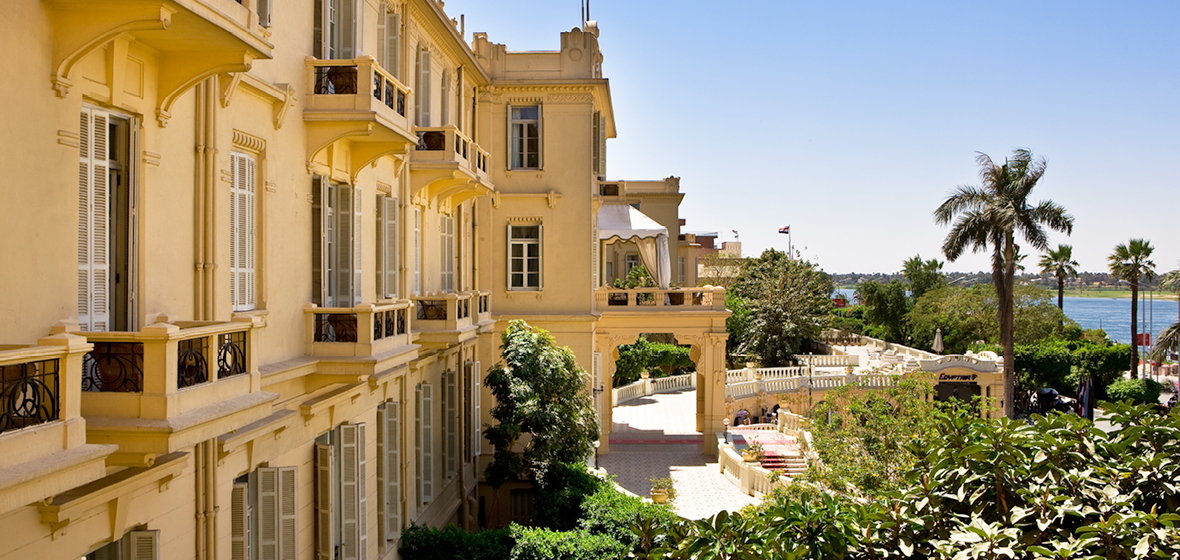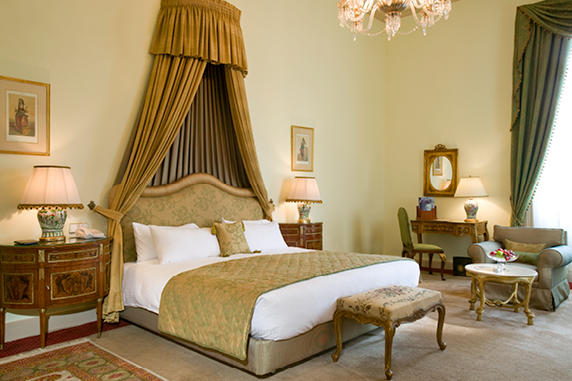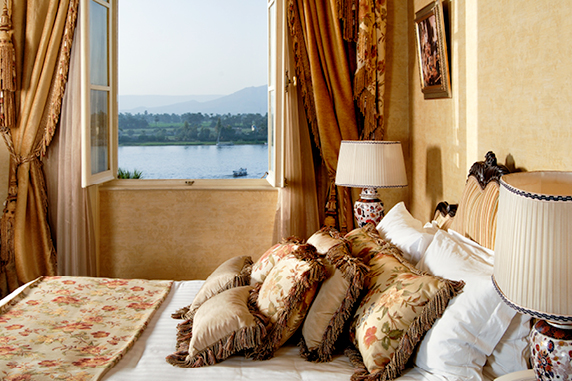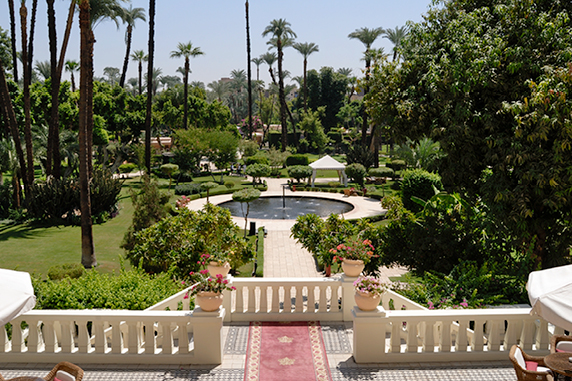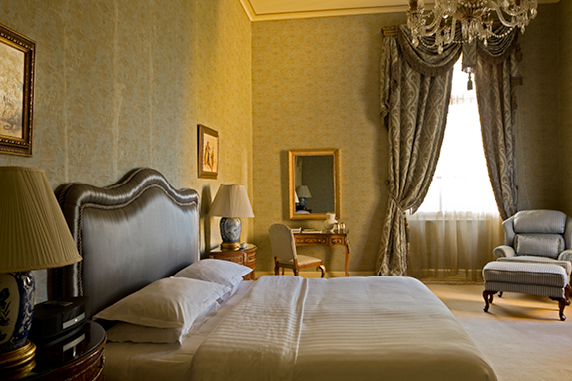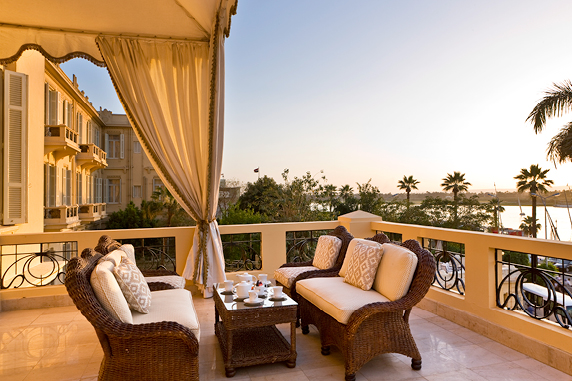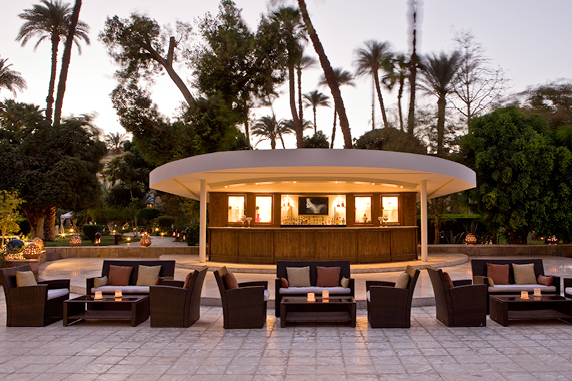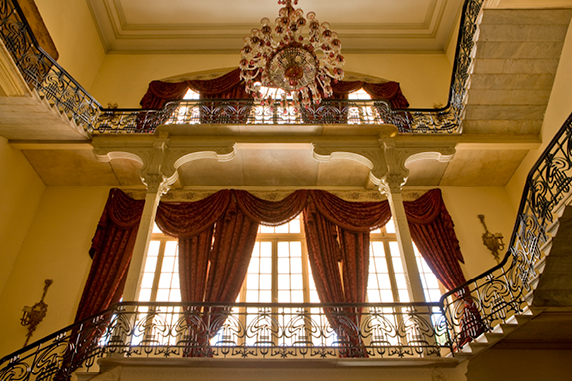Luxor is the ancient religious capital of Egypt: a cultural oasis bursting with historic sites and mystique. It seems apt to base your explorations at a hotel fit for pharaohs, and we have found just the place.
They don’t make lobbies like this anymore. Step inside the Sofitel Winter Palace Luxor and you are surrounded by Victorian grandeur at its best. As your eyes sweep from the inlaid tile floor up to the soaring ceiling, they are drawn to the magnificent chandeliers, the windows framed by heavy drapes and – most imposing of all – the grand staircase gliding upwards between elegant wrought-iron railings.
The lobby is not the only thing that’s grand about the Winter Palace. Facing the slow-flowing Nile, the former winter residence of Egypt’s royal family rejoices in a series of gorgeous drawing rooms decked out with ornate carpets, damask-covered armchairs and gilt-framed mirrors. It was built in 1886 by British explorers, perched on the Nile River amid luxuriant tropical gardens and ancient temples. Each of the generously sized guest rooms is equipped with marble bathrooms. No wonder that battalions of celebrities have chosen this as their Luxor address; from Hillary Clinton all the way back to Agatha Christie, who stayed here while writing Death on the Nile.
It is very tempting to cocoon yourself in the Winter Palace, but that would be a mistake. In ancient days, Luxor – then known as Thebes – was Egypt’s religious capital, and its collection of ancient tombs and temples scattered along both banks of the Nile is the most impressive in the country.
The sightseeing starts almost as soon as you walk out the hotel’s front door. Just a few minutes stroll away is Luxor Temple, built by a succession of pharaohs including Amenhotep III and Tutankhamun, and in use until the kingdom’s dying days. Head to the rear of the temple and you will even find a shrine dedicated to Alexander the Great, who conquered Egypt and had himself crowned pharaoh.
Impressive as this temple is, however, it cannot compete with Luxor’s greatest monument.
Karnak is the temple that outshines every other temple in Egypt. Every pharaoh in turn added to its splendours; today, the site covers an incredible two square km. You will need plenty of time, as well as a local guide, to get to grips with its dazzling delights: the elaborately-carved chapels, the monumental statues, the towering hypostyle hall – there is even a sacred lake.
Another must-visit is Luxor Museum, perched on the corniche fronting onto the Nile. It has a superb collection of spectacular statues, royal mummies, and ancient artefacts all excavated in and around Luxor. Among the most intriguing are the statues of Akhenaten, the renegade pharaoh who launched a whole new religion and a new artistic style. Neither lasted long; after his death, Akhenaten’s son Tutankhamun restored Egypt’s ancient gods to their rightful place.
But Luxor’s most memorable attractions lie on the far side of the Nile, across the water from Sofitel Winter Palace Luxor. The ancient Egyptians designated the west bank where the sun set as the land of the dead, and this is where the pharaohs were buried in hidden tombs piled high with treasures. More than 60 tombs have been discovered to date in the Valley of the Kings but only a handful are open to visitors. One of the most spectacular is the joint tomb of Ramesses V and Ramesses VI, its walls and ceilings covered with vividly coloured depictions of the pharaoh, his courtiers and revered gods such as Osiris, ibis-headed Thoth and jackal-headed Anubis.
Kings weren’t the only ones who were buried on the west bank; the Valley of the Queens and the Valley of the Nobles are equally cluttered with tombs. Among the most memorable is the tomb of Queen Nefertari, who was married to Ramesses the Great and is known to have corresponded with other rulers. Her grave is covered with gorgeous frescoes, including images depicting Nefertari wearing a white gown and a golden crown with feathers, and an azure ceiling covered with stars.
The west bank is also home to some imposing mortuary temples, where pharaohs were worshipped after their deaths. Ramesses III’s temple is remarkable for the elaborate carvings that depict his military victories. A different approach was taken by Hatshepsut, one of Egypt’s few female pharaohs. In her triple-tiered mortuary temple, carvings on the wall gives a detailed account of her successful trade missions.
Exploring Luxor’s wonders is thrilling, but also tiring. You will rise early, to beat the heat of the sun, and be out and about in hot, dry conditions. This is where the Sofitel Winter Palace unveils its secret weapon. Hidden behind the main building is a remarkable oasis, a lush garden that is Luxor’s most inviting place to relax. Paths made for meandering wind through extravagant palm trees, bougainvillea and a profusion of tropical plants. At its heart sits a vast swimming pool and an inviting bar which, on a balmy Egyptian evening, is the perfect place to relax and leave all your cares behind.
Photography: Serge Detalle, Emad Mahjoub, Gilles Trillard
CHECKLIST
Get there: Fly to Luxor International Airport and the Sofitel Winter Palace is a 15-minute drive by taxi or 24-hour hotel shuttle bus (arrange for pick up by emailing the hotel [email protected])
Stay there: Rooms at the Winter Palace start from $138 per night. sofitel.accor.com

